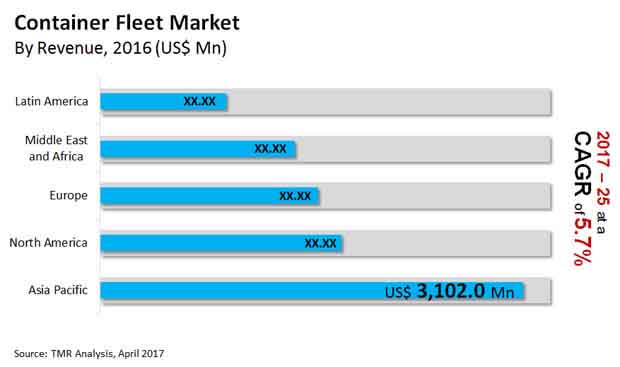Global Container Fleet Market: Snapshot
Container fleet refers to the concept of containerization through sea in an intermodal transportation process. The increase in use of high capacity vessels or ships reduces the cost of containers as they can store more number of containers at a time. This, coupled with the rapid increase in use of fleet management systems are likely to push the growth of this market upward in the next few years.
In the intermodal transportation procedure, the goods are not required to unload or reload from the containers and due to this the intermodal transportation is in high demand in the container fleet market. Moreover, the refrigerated cargo containers help the container fleet market to transport fresh vegetables, fruits, medicines, and meat, while maintaining their temperature thus reducing the risk of damage. Spurred by these factors, the demand for container fleet is expected to rise considerably in the coming years.
As manufacturers look towards integrating analytics, the container fleet market will scale higher. Incorporating analytics will the help in dealing with network related issues such as terminal operations, container utilization, and also vessel deployment. However, large capital investments involved in the container fleet market can limit its scope for expansion in the coming years.
The global market for container fleet stood at US$8812.4 mn in 2016. Rising at a CAGR of 5.7% from 2016 to 2025, the global container fleet market is likely to reach US$14.41 bn by the end of 2025.
Planning to lay down future strategy? Perfect your plan with our report brochure here

Asia Pacific to Continue Leading Global Container Fleet Market
On the basis of geography, the global container fleet market is segmented into North America, Europe, Asia Pacific, Middle East and Africa, and Latin America. Among these regions, Asia Pacific dominated the market for container fleet in 2016, followed by North America. These regions collectively accounted for more than 50% of the total revenue generated by the market in 2016. However, Asia Pacific is projected to grow at a higher pace during the forecast period followed by Europe, North America, Middle East and Africa and Latin America.
No comments:
Post a Comment